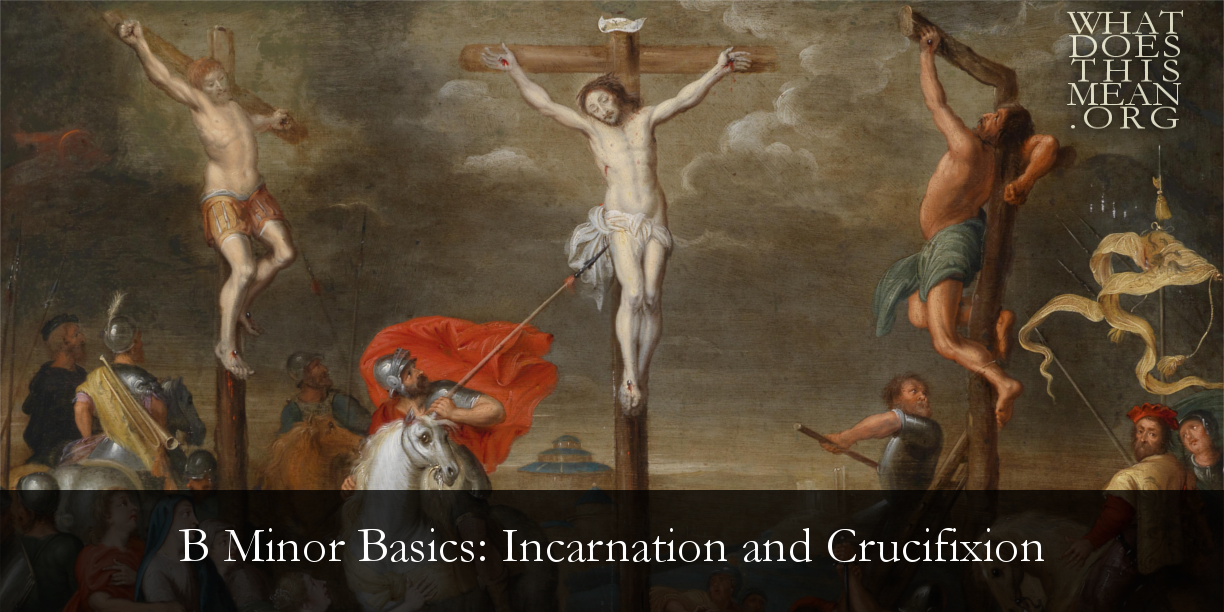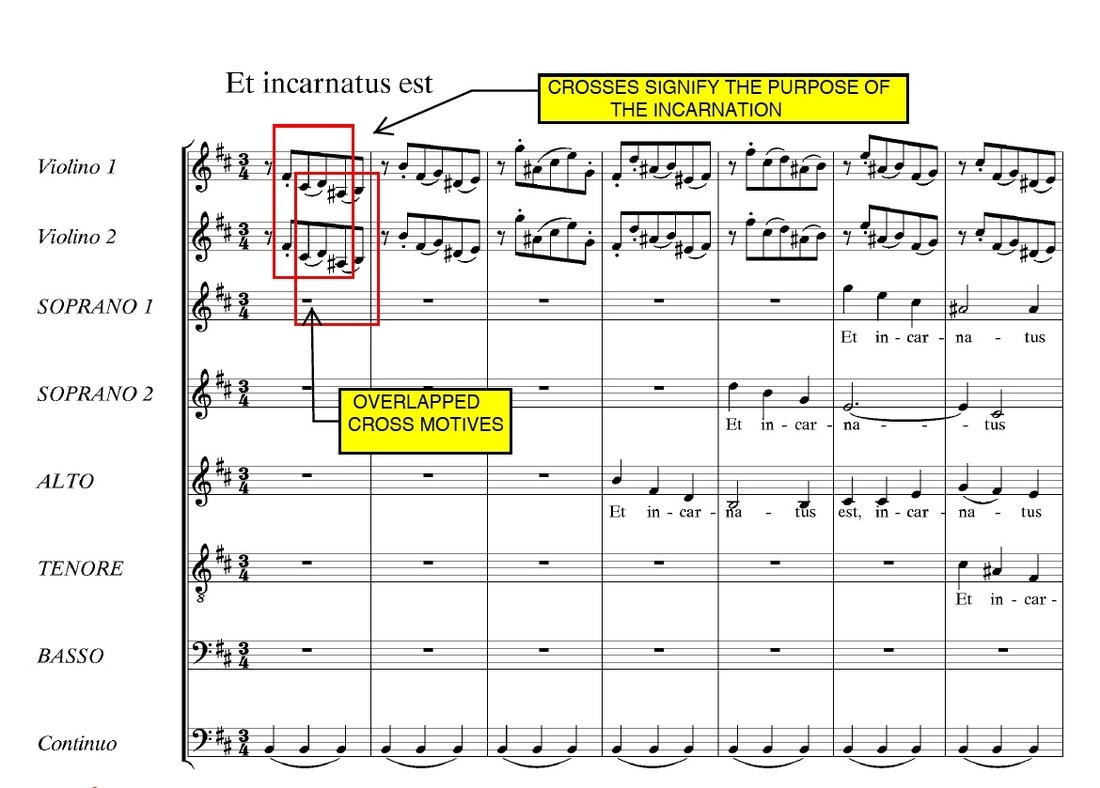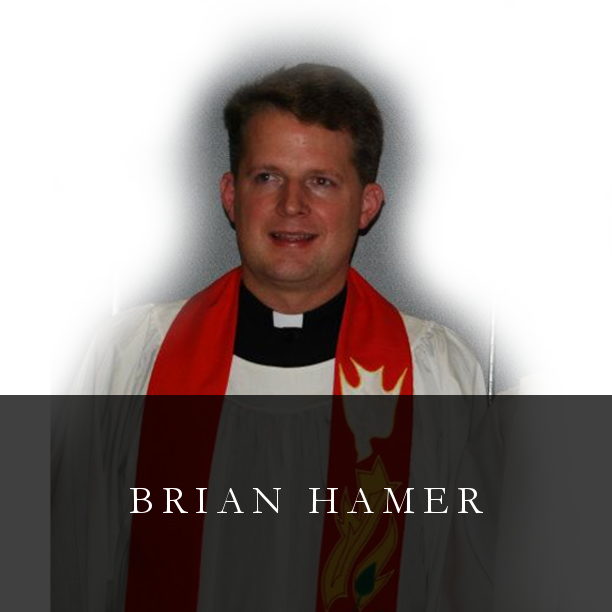And the Son / Now is one / With our blood forever.
Before delving into the details of the two movements at hand, consider the structure of the Credo of The B-Minor and how it places the Crucifixus at the center, closely framed by the incarnation and resurrection of the Son of God:
| I believe in one God The Father almighty … And in one Lord Jesus Christ … And was incarnate … And was crucified … And the third day He rose … And I believe in the Holy Spirit … I acknowledge one Baptism … And I look for the resurrection of the dead … | CHORUS CHORUS DUET CHORUS CHORUS CHORUS ARIA CHORUS CHORUS |
Now listen to Bach’s musical depiction of the incarnation and crucifixion (the transition occurs at 3:38 in this video), performed here at St. Thomas Leipzig, where Bach served as Kantor (1723-1750), but where the Credo was not heard until long after Bach’s death:
| Et incarnatus est de Spiritu Sancto Ex Maria virgine Et homo factus est. Crucifixus etiam pro nobis Sub Pontio Pilato, Passus et sepultus est. | And was incarnate by the Holy Spirit Of the Virgin Mary And was made man. And was crucified also for us under Pontius Pilate, He suffered and was buried. |
Second, notice at the top of the score the jagged instrumental line, which also continues throughout the movement. The unison violins seem to “sigh” by leaning on the lower notes and “sighing” into the upper neighbor. If one draws a line from the second to the fifth note and another line from the third to the fourth note, then it produces the shape of the cross in every measure of violin music:
Taken together, the musical continuity between Et incarnatus and Crucifixus seamlessly connects the theology of the incarnation to the theology of the cross. Christ was incarnate for us so that He might be crucified for us and for our salvation. This connection between the incarnation and the cross was not lost on Paul Gerhardt (1607-1676), whose hymns were well known in Leipzig from the 1730’s and used regularly by J. S. Bach in his sacred choral works. In contrast to the sap, sentiment, and even theological sediment of many Christmas hymns today (what parent can possibly take seriously, for instance, the fantasy that “little Lord Jesus, no crying He makes”?), see how the theology of the cross is central to Gerhardt’s Christmas hymn, “All My Heart Again Rejoices.” Just after the words quoted as the header to this article (“God is man, man to deliver,” etc.), he gives the church voice to sing of Jesus’ incarnation and crucifixion in tandem:
| Should we fear God’s displeasure, Who, to save, Freely gave His most precious treasure? To redeem us He has given His own Son / From the throne Of His might in heaven. See the Lamb, our sin once taking / To the cross, Suff’ring loss, Full atonement making. For our life His own He tenders, And His grace / All our race Fit for glory renders. (Lutheran Service Book 360, stz. 4-5) |
Addendum: Watch the video below a one-hour lecture on the Credo by Helmuth Rilling, one of the most respected Bach scholars in the world. His insights into the tune, text, and context of the Credo are highlighted by demonstrations from the professional musicians of the Oregon Bach Festival.





 RSS Feed
RSS Feed
